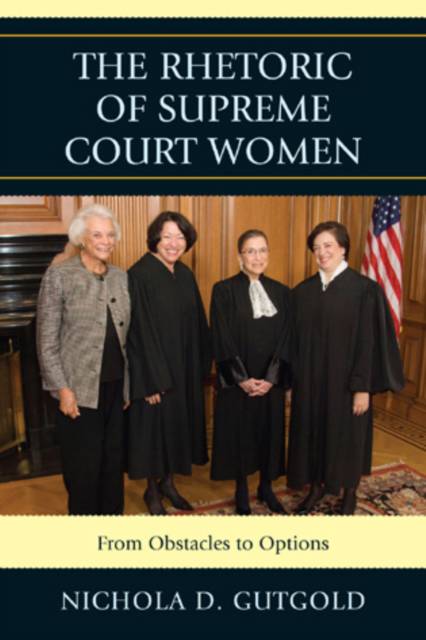
- Afhalen na 1 uur in een winkel met voorraad
- Gratis thuislevering in België vanaf € 30
- Ruim aanbod met 7 miljoen producten
- Afhalen na 1 uur in een winkel met voorraad
- Gratis thuislevering in België vanaf € 30
- Ruim aanbod met 7 miljoen producten
Zoeken
€ 172,45
+ 344 punten
Omschrijving
The Supreme Court is one of the most traditional institutions in America that has been an exclusively male domain for almost two hundred years. From 1981 to 2010, four women were appointed to the Supreme Court for the first time in U.S. history. The Rhetoric of Supreme Court Women: From Obstacles to Options, by Nichola D. Gutgold, analyzes the rhetoric of the first four women elected to the Supreme Court: Sandra Day O'Connor, Ruth Bader Ginsburg, Sonia Sotomayor, and Elena Kagan. Gutgold's thorough exploration of these pioneering women's rhetorical strategies includes confirmation hearings, primary scripts of their written opinions, invited public lectures, speeches, and personal interviews with Justices O'Connor, Ginsburg, and Sotomayor. These illuminating documents and interviews form rhetorical biographies of the first four women of the Supreme Court, shedding new light on the rise of political women in the American judiciary and the efficacy of their rhetoric in a historically male-dominated political system. Gutgold's The Rhetoric of Supreme Court Women provides valuable insight into political communication and the changing gender zeitgeist in American politics.
Specificaties
Betrokkenen
- Auteur(s):
- Uitgeverij:
Inhoud
- Aantal bladzijden:
- 158
- Taal:
- Engels
Eigenschappen
- Productcode (EAN):
- 9780739172506
- Verschijningsdatum:
- 31/05/2012
- Uitvoering:
- Hardcover
- Formaat:
- Ongenaaid / garenloos gebonden
- Afmetingen:
- 155 mm x 231 mm
- Gewicht:
- 408 g

Alleen bij Standaard Boekhandel
+ 344 punten op je klantenkaart van Standaard Boekhandel
Beoordelingen
We publiceren alleen reviews die voldoen aan de voorwaarden voor reviews. Bekijk onze voorwaarden voor reviews.











